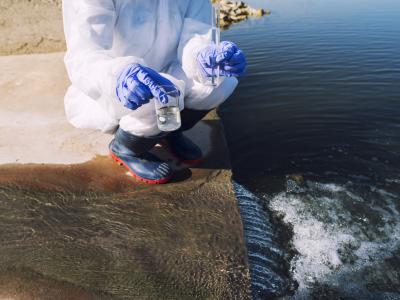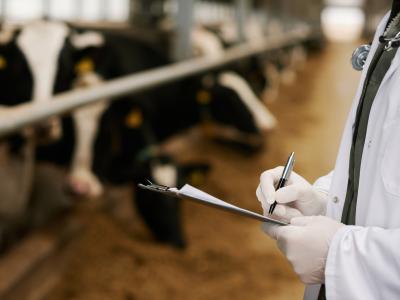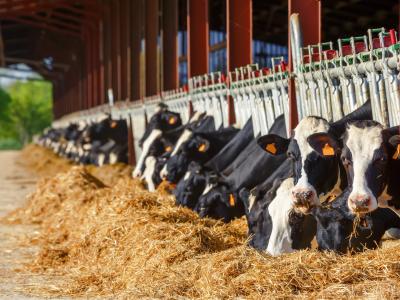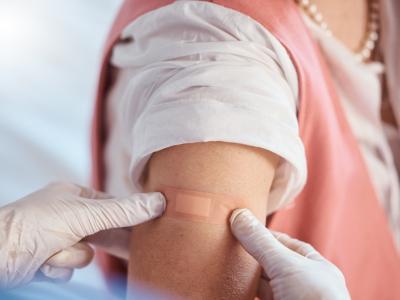Report says COVID-19 holds lessons for response to AMR
The COVID-19 pandemic, and the global response, contain important lessons that can be used to avert a future pandemic caused by antimicrobial resistance (AMR), according to a new report from the Global Antibiotic Research and Development Partnership (GARDP).
The report notes that while there are differences between fast-moving viral pandemics and the slower-moving "silent pandemic" of AMR, the COVID-19 pandemic has underscored what happens when governments are unprepared, international cooperation is low, and treatments, diagnostics, and vaccines are not available. As a result, the pandemic is reinforcing the importance of research, development, and equitable supply of medical countermeasures to treat and prevent pandemic diseases and presenting an opportunity to improve the response to future pandemics, including those caused by drug-resistant infections, the authors say.
Among the lessons highlighted in the report are that investments in preparedness are necessary, collaboration and international cooperation are critical, and that equitable and affordable access to medical countermeasures is an essential element of effective pandemic response. But inequitable access to medical countermeasures can undermine the trust that many nations have in the international system.
To prepare for a pandemic of drug-resistant infections, the report recommends five concrete steps that the global community can take. These include recognizing and addressing antibiotic resistance; investing in development of medical countermeasures; ensuring that access to treatments, diagnostics, and vaccines for all is a cornerstone of pandemic preparedness and response; expanding global cooperation within a One Health framework; and making low- and middle-income countries equal partners in a comprehensive response.
"AMR requires a long-term investment and is an opportunity for governments to find a collective approach to global health that is fair to all; that prioritises coordination, partnership and solidarity; that takes a multisectoral and multilateral approach; and that satisfies public health needs and human life over economic and political considerations," the report concludes. "Achieving this would cascade into lasting and life-saving benefits for people and countries across the world."
Nov 17 GARDP report
UK farmers, veterinarians set new targets for antibiotic use in animals
A task force of veterinarians and farmers in the United Kingdom yesterday released new targets for responsible use of antibiotics in farm animals.
The goals for 2021 through 2024, laid out in a report from the Responsible Use of Medicines in Agriculture Alliance (RUMA), include a 30% decrease in antibiotic use in pigs, reductions of 15% in dairy herds and 25% in calf rearing units, and a 40% reduction in game birds.
"We look forward to working with the sectors as we continue on this endeavour, which will ultimately be of benefit to the reputation of the UK livestock sectors as well as helping to protect human and animal health," Peter Borriello, PhD, chief executive of the UK's Veterinary Medicines Directorate, said in a RUMA press release.
The new goals were released the same day as the UK Veterinary Antibiotic Resistance and Sales Surveillance Report (UK-VARSS 2019), which showed a 45% decline in sales of antibiotics for food-producing animals from 2015 through 2019 (despite a 5% increase between 2018 and 2019), and 74% decline in the sales of highest-priority critically important antibiotics. The report also showed lower levels of antibiotic resistance in Escherichia coli in healthy pigs at slaughter compared with 5 years ago.
RUMA says its initial targets, released in 2017, have helped UK farmers achieve the antibiotic sales reductions documented in the UK-VARSS report. Over 75% of the 2017 targets have already been achieved or are on track to be achieved by December.
"The UK farming industry has responded extremely well to the targets. Our original aim of lowering overall antibiotic use, and in particular highest-priority critically important antibiotics (HP-CIAs), has been categorically achieved in the face of some challenging external conditions," said RUMA chair Catherine McLaughlin.
Nov 18 RUMA press release
Nov 18 RUMA 2020 targets task force report
Nov 18 UK-VARSS 2019 report
UK reports show rise in resistant infections, drop in gonorrhea resistance
Two reports released yesterday by Public Health England (PHE) highlight good and bad news on antibiotic-resistant infections in humans.
The English Surveillance Programme for Antimicrobial Utilisation and Resistance (ESPAUR) report shows a 17% increase in incidence of bloodstream infections caused by key bacterial species (E coli, Klebsiella pneumoniae, Enterococcus spp) between 2015 and 2019 and a 32% increase in antibiotic-resistant bloodstream infections caused by those species, with an estimated 18,110 antibiotic-resistant bloodstream infections diagnosed in England in 2019 (up from 13,671 in 2015). Overall, the report estimates there were 65,162 severe antibiotic-resistant infections diagnosed in 2019, up from 61,946 in 2018.
But the report also shows that antibiotic consumption in England has fallen since peaking in 2014, with total use declining from 19.4 defined daily doses per 1,000 inhabitants per day in 2015 to 17.4 in 2019, driven largely by a 12.2% decline in antibiotic prescribing in general practices and a 19.5% decline in dental practices. Antibiotic consumption rose, however, in other community settings and in hospital inpatients and outpatients.
The report from the Gonococcal Resistance to Antimicrobial Surveillance Programme (GRASP), meanwhile, found that the proportion of Neisseria gonorrhoeae isolates in England and Wales with reduced susceptibility to ceftriaxone—the current first-line therapy for gonorrhea in England—fell from 7.1% in 2018 to 2.9% in 2019, following a steady increase from 2013 through 2018. Outside of the sentinel surveillance system, three cases of ceftriaxone-resistant gonorrhea were confirmed by PHE in 2019.
The surveillance report also showed a slight decline in azithromycin resistance (9.8% to 9.3%) and a decline in cefixime resistance (2.2% to 0.8%).
"The effectiveness of first-line treatment for gonorrhoea continues to be threatened by the development of antimicrobial resistance," the report said. "However, the decline in reduced ceftriaxone susceptibility, together with decreasing cefixime resistance and stable rates of azithromycin resistance, are encouraging developments."
Nov 18 PHE ESPAUR report
Nov 18 PHE GRASP report














